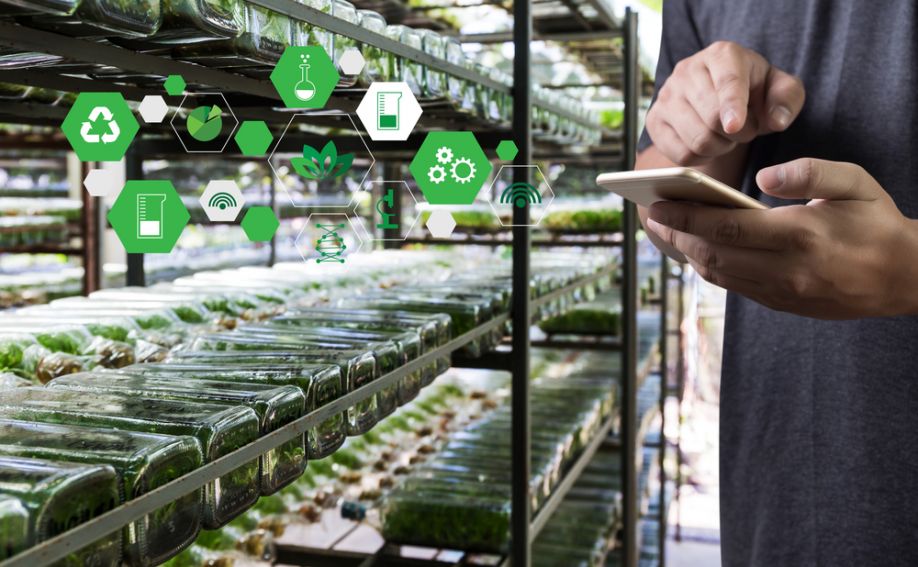3 Challenges of Vertical Farming and Their Solutions

The world is continuing to grow. By the year 2050, researchers estimate that there will be nearly 10 billion people on the planet. As the population increases, the demand for food and food security also increases.
Traditional farming methods won’t be able to sustainably keep up with the necessary food production to feed the population. That’s why farmers and researchers have been developing new means of feeding people, especially in urban areas.
The advent of vertical farming has taken the agricultural industry by storm. Although it has proven to be beneficial to farmers and the environment alike, there are some challenges that vertical farmers face. Below are three challenges of vertical farming and their solutions. As long as the solutions are available, vertical farming can still be a reliable way to feed the population.
Vertical Farming Basics
Vertical farming takes traditional farming to new levels — literally. Instead of the conventional horizontal, soil-based farming, vertical farming implements hydroponics into vertical buildings. Crops grow upwards instead of outwards.
The buildings use a combination of climate and light-controlled areas to grow the plants. It creates a perfect environment for plants to thrive. This type of farming is optimal in urban areas because it takes up much less space than a traditional farm.
Therefore, populations in cities and urban communities have the opportunity to get fresh produce a few blocks away from their homes. Since most of the world’s population will reside in urban areas, this provides greater food security for them.
Vertical farming has evolved over the years to include more than just fruits and vegetables. Seafood producers wanted a more sustainable approach to seafood production, so they have also implemented vertical farming techniques. Seafoods like mussels, scallops and seaweed grow vertically on ropes, which creates a more biodiverse and resilient seafood system.
Challenges of Vertical Farming and Their Solutions
Unfortunately, there are challenges that vertical farmers face that they must solve to meet those future food needs and to remain sustainable. Here are some of the challenges, along with potential solutions, of vertical farming.
Location
Although vertical farms can go almost anywhere, farmers have to choose the correct location. If it’s too far from potential consumers, then it won’t be a lucrative business. One could have the best place, but if there isn’t a demand for food there, then they won’t be able to sell the produce.
Plus, land in cities can be a bit more expensive. Smaller vertical farms have a more difficult time finding land they can afford, along with permits and insurance.
The solution is to research the considered locstion for a vertical farm. What kinds of food are the people there looking for? Can a vertical farm provide that for them? Will they be a loyal customer to the farm? Without a good location, a vertical farm won’t get far. Fundraising, loans and grants are great options for farmers who may not have the funds for a location, too.
Temperature and Humidity Control
The next challenge is temperature and humidity control. These two need to be spot on to produce vegetables and fruits. Managing them can take a while to overcome. Farmers often have to try various recipes of cooling, dehumidification and heating. Vertical farms are usually well-insulated, so when the weather gets warmer, the farmer must cool it and remove humidity.
Before installing an HVAC system, it’s wise to ask for professional help to know how large of a system will be needed for the building. This is the best solution to this challenge, and it will save a lot of headaches in the future.
Multitasking
Another challenge is ensuring proper management of the entire vertical farm. Many farmers who set out to start their industry in vertical farming rely on themselves and possibly a couple of other people to get all of the work done. Vertical farms attempt to do too many things simultaneously, like growing food and selling technology and managing day-to-day tasks.
New vertical farmers should focus on one thing, like growing food and selling it. This helps build a solid customer base. Choosing either growing and selling or developing technology so allows the farmer to put their best effort into it.
Farming of the Future
Vertical farming has become a popular solution to the growing problem of food security. However, there are challenges within the industry that must first be addressed and overcome to remain a sustainable business. These challenges and solutions are excellent learning tools to grow a thriving vertical farm.
Comments (0)
This post does not have any comments. Be the first to leave a comment below.
Featured Product

